Difference Between Electromotive Force (EMF) and Potential Difference
In this article, we will discuss the Difference Between Electromotive Force (EMF) and Potential Difference.
Difference Between Electromotive Force (EMF) and Potential Difference
The energy supplied by the battery to a unit positive charge is called Electromotive force(EMF). In order to maintain a constant electric current through a conductor, a source of potential difference is required. The strength of such a source is known as Electromotive Force (EMF).
The difference in electric potential energy per unit charge between two points is called the potential difference.
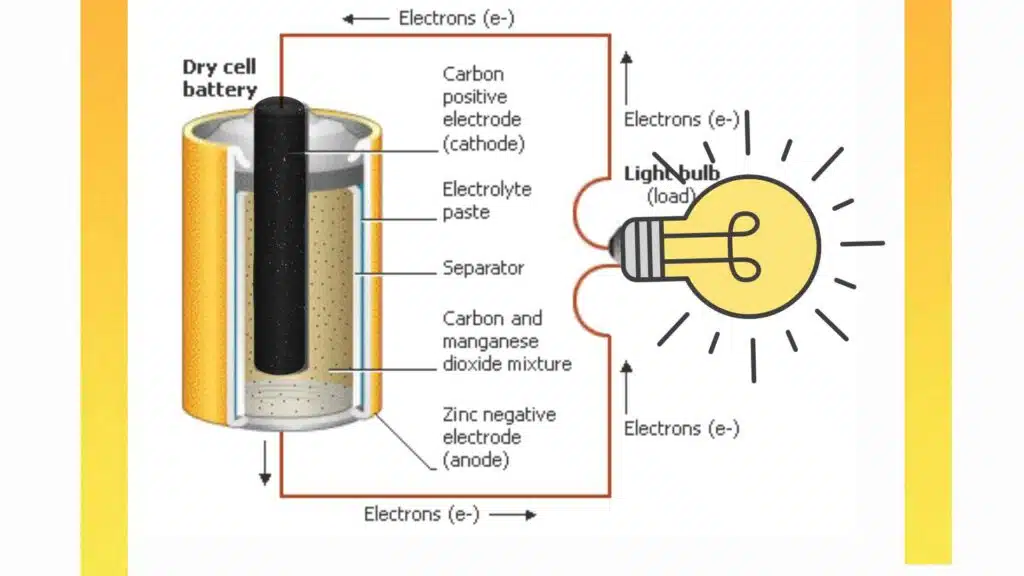
A battery is a source of electrical energy. When the battery is connected across a resistor ‘R’, it sends a constant electric current through it.
Suppose ΔQ charge flows through the circuit in time Δt. This charge enters the cell at low potential (-ve terminal) and leaves it at high potential (+ve terminal). The battery supplies ΔW energy to the charge ΔQ to move it from low potential to high potential.
Thus the emf ‘E’ of the source is defined as the energy supplied to the unit charge by the cell.
Mathematically
E= ΔW/ ΔQ
Unit of emf
The unit of emf is joule/coulomb which is volt (V)
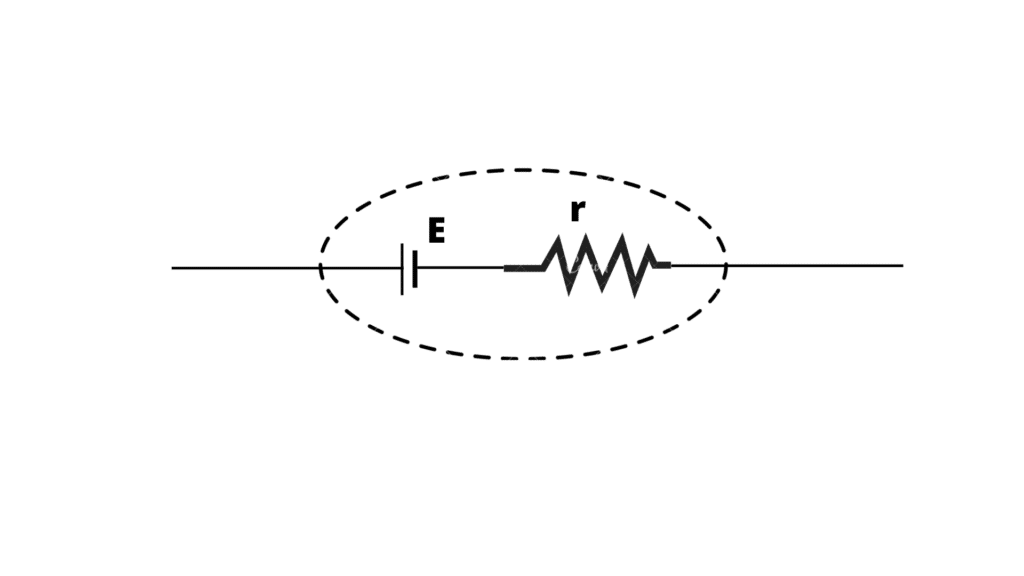
A cell of emf E and internal resistance ‘r’ is equivalent to a source of pure emf E with a resistance r in series as shown in the figure.
It may be noted that electromotive force is not a force to be measured in Newton’s. The energy supplied by the cell to charge carriers is derived from the conversion of chemical energy into electrical energy inside the cell.
Like other components in a circuit, a cell also offers some resistance, called internal resistance (r). This resistance is due to the electrolyte present between the two electrodes of the cell.
Expression for emf of a source
Consider a battery of emf ‘E’ connected across a resistor R and a voltmeter of infinite resistance. The voltmeter is used to measure the terminal potential difference (V) across the cell or the potential difference across the external resistance (R).
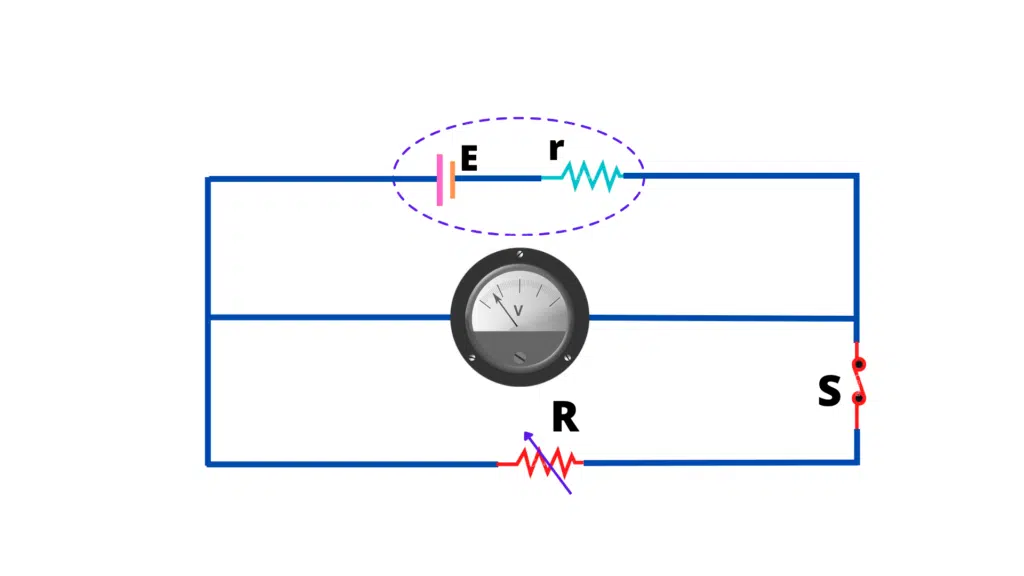
The current flowing through the circuit is given by
l = E/(R + r)
From Ohm’s law, I = (V / R)
E=IR+Ir
Where, IR = V = Terminal potential difference across the terminals of the cell when the battery is supplying current “I” to the external circuit.
So Eq. becomes,
E = V + lr
V = E – lr
Which is the relation between ’emf’ and ‘terminal potential difference When switch S is open, no current passes through the external circuit, and l = 0 then
V=E
It is concluded that when the circuit is open, emf & terminal potential difference becomes equal and the voltmeter reads the emf as terminal voltage Moreover, when switch ‘S’ is close then V would be decreased by a factor Ir.
Interpretation of [E = IR + Ir] on energy considerations:
The left-hand side [E = IR + Ir] of the equation is the ’emf’ of the cell which is the energy given by the cell to the unit positive charge when moves through the cell from the negative to the positive terminal.
The right-hand side of the equation describes the utilization of this energy. It states that a part of this energy equal to “Ir” is dissipated into the cell.
The remaining energy is dissipated into the external resistance R as the unit charge passes through it.
It is given by the potential drop “IR”.
Difference between emf & terminal Potential difference
The emf is the “cause” and the ‘potential difference’ is its “effect”.
The ’emf’ is always present even when no current is drawn through the battery or the cell. But the potential difference across the conductor is zero when no current flows through it.
Maximum power output
When current I flow through the resistance R, the charges flow from point of higher potential to lower potential and lose their potential energy. If v is the potential difference across R then the loss of P.E. per second is VI.
This loss of energy per second is known as the power delivered to R by the current I
Power delivered to R=Pout =VI
But
V = IR
Pout =IR.I =I2R
Also I = E/(R + r)
Pout = (E/R + r) 2R= E2 R /(R+r)2
As (R +r) 2=(R – r)2+ 4rR
Pout =E2R /(R – r) 2 + 4Rr
When R=r the Pout is maximum because then the denominator is minimum.
Thus when internal resistance is equal to load resistance then maximum power is delivered to load resistance.
r=R
Poutmax= E2r/(r – r)2 + 4Rr
Poutmax= E2r/4r2
Poutmax= E2/4r
Frequently Asked Questions-FAQs
Are EMF and potential differences the same?
The potential difference is the amount of energy utilized by one coulomb of charge. The circuit’s internal resistance doesn’t affect the electric force. The difference is proportional to the circuit’s resistance.
How does EMF maintain potential difference?
The emf source works as a charge pump, moving negative charges from the positive terminal to the negative terminal in order to maintain the potential difference. This increases the potential energy of the charges and the electric potential of the charges.
Is it possible to have current without a potential difference?
Current can’t flow because we know that an electric current can flow between two points if there is a potential difference between them. As long as the potential difference is maintained between the two points, the electric current keeps flowing.



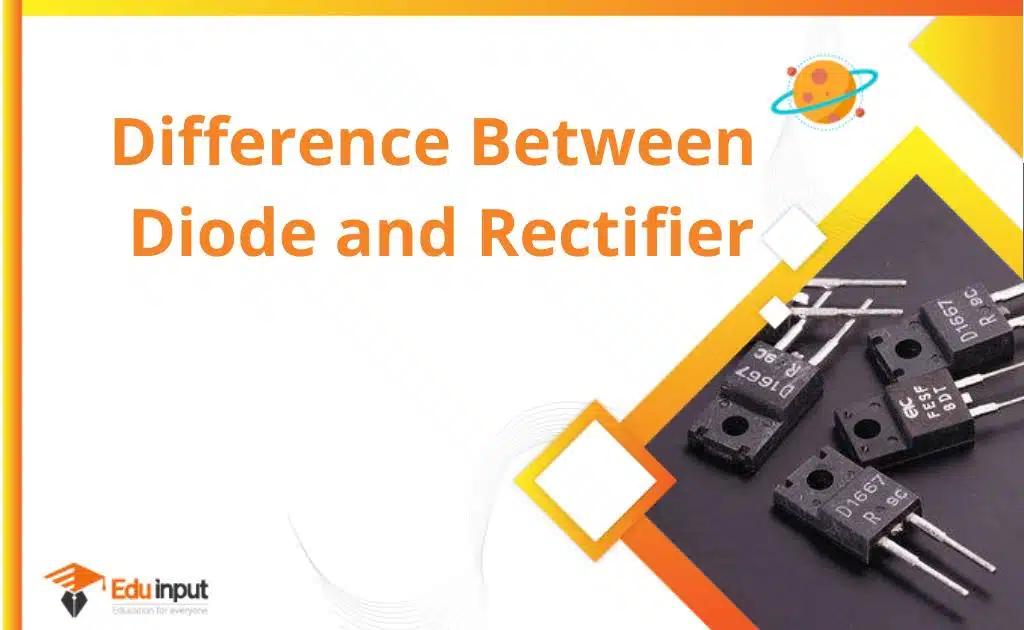
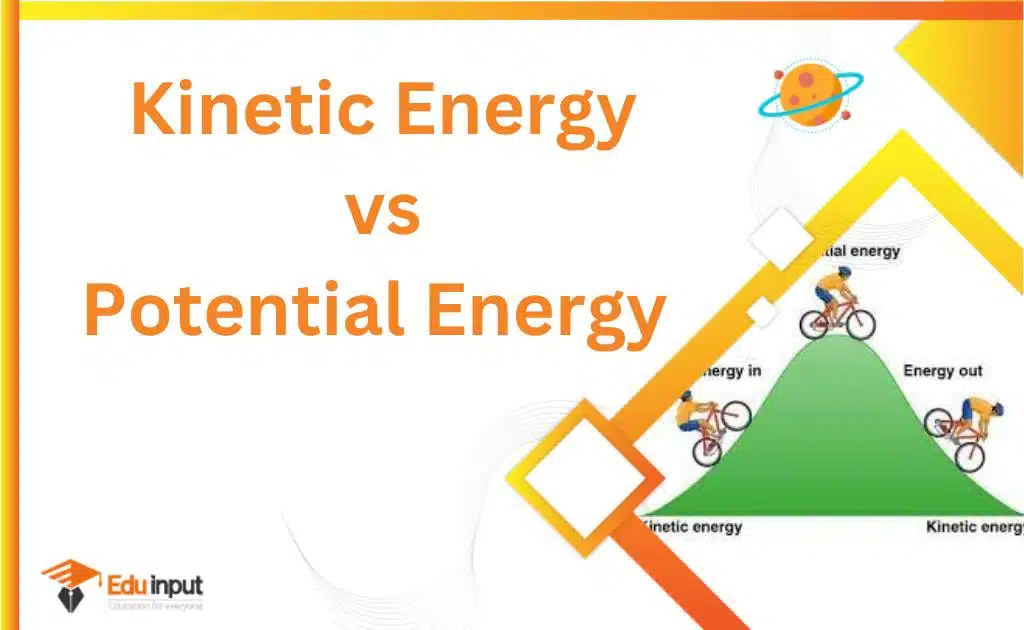

Leave a Reply